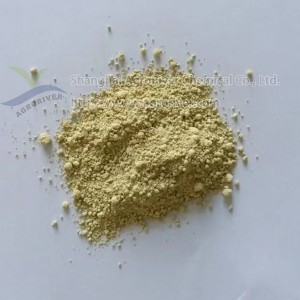Tebuconazol
Sollicitatie
Tebuconazol is effectief tegen verschillende smut- en stootziekten van granen zoals Tilletia spp., Ustilago spp., En Urocystis spp., Ook tegen septoria nodorum (zaad-borne), bij 1-3 g/dt zaad; en Sphacelotheca Reiliana in maïs, met 7,5 g/dt zaad. Als spray regelt Tebuconazol talrijke ziekteverwekkers in verschillende gewassen, waaronder: roestsoorten (Puccinia spp.) Bij 125-250 g/ha, poederachtige meeldauw (Erysiphe Graminis) bij 200-250 g/ha, Scald (rhynchosporium secalis) bij 200- 312 g/ha, septoria spp. Op 200-250 g/ha, Pyrenophora spp. op 200-312 g/ha, cochliobolus sativus op 150-200 g/ha en hoofdschurft (Fusarium spp.) Bij 188-250 g/ha, in granen; Bladvlekken (Mycosphaerella spp.) Bij 125-250 g/ha, bladroest (Puccinia arachidis) bij 125 g/ha en sclerotium rolfsii op 200-250 g/ha, in pinda's; Black Leaf Streak (Mycosphaerella fijiensis) op 100 g/ha, in bananen; stengelrot (sclerotinia sclerotiorum) bij 250-375 g/ha, Alternaria spp. bij 150-250 g/ha, stengelkanker (Leptosphaeria maculans) bij 250 g/ha en Pyrenopeziza Brassicae bij 125-250 g/ha, in verkrachting van oliezaad; Blister Blight (exobasidium vexans) bij 25 g/ha, in thee; Phakopsora Pachyrhizi op 100-150 g/ha, in sojabonen; Monilinia spp. bij 12,5-18,8 g/100 L, poederachtige meeldauw (podosphaera leucotricha) bij 10.0-12,5 g/100 l, sphaerotheca pannosa bij 12,5-18,8 g/100 l, schurft (Venturia spp.) Bij 7,5-10,0 g/100 l, witte rot in appels (botryosphaeria dothidea) bij 25 g/100 l, in kiezel- en steenfruit; Poederachtige meeldauw (Uncinula Necator) bij 100 g/ha, in wijnstokken; Roest (Hemileia Vastatrix) bij 125-250 g/ha, Berry Spot Disease (Cercospora Coffeicola) bij 188-250 g/ha en Amerikaanse bladziekte (Mycena Citricolor) bij 125-188 g/ha, in koffie; witte rot (sclerotium cepivorum) bij 250-375 g/ha en paarse vlek (alternaria porri) bij 125-250 g/ha, in bolgroenten; Bladvlek (Faeoisariopsis griseola) bij 250 g/ha, in bonen; Early Blight (Alternaria Solani) op 150-200 g/ha, in tomaten en aardappelen.







